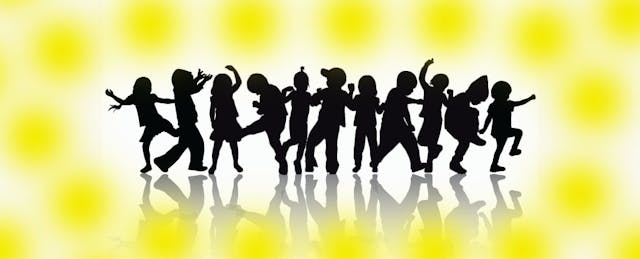When I was a student, my high school English teacher was a bit quirky; she asked her students to create a dance that correlated with a “rap” about helping verbs—a rap that she had developed herself. As a group of 16-year-olds, we brainstormed dance moves that would help us memorize helping verbs, and designed a dance with content that I still remember to this day.
Now that I’m a teacher, I do the same. I give my students opportunities in class to get involved and connect with the content by using different songs, actions, and/or activities. Can you imagine thirty students “dabbing” in class?
Get Students Moving, Part 1: Engaging Multiple Senses
When you can get students talking and teaching each other, adding movement or gestures into the process, the students learn and retain more. Whether you call this process “Brain-Based Learning” or “Whole-Brain Learning,” the concept is the same. The goal of brain-based learning is to “engage your learners and do it with strategies that are based on real science” (Jensen). Their learning increases because they are engaging more parts of their brain during the teaching process.
As a teacher, when using brain-based learning strategies, the intent is to activate the different parts of the brain involved with the various senses during the learning process. After all, Dr. Kenneth Wesson, an educational consultant in neuroscience, says, “Young, developing brains benefit most from a rich variety of one-on-one emotional, verbal, visual, physical and tactile engagements” (2011).
In the earlier example of the ‘helping verb rap,’ using song and dance in the classroom improved our learning by connecting the verbal and visual content with movement. In this activity, instead of the students using only their sense of sound as they listen to the teacher talk, they can now use sight, sound, touch, as well as their emotions.
Get Students Moving, Part 2: Having Students Teach Each Other Face-to-Face
Research has also shown that when you can get students interacting face-to-face and teaching each other, the student doing the teaching is often the student that is doing more of the learning (Kilhstrom).
Don’t believe me? Here’s another piece of research advice from Kenneth Wesson: “Learning experiences become more memorable when social-emotional memories are part of the learning event, which is why cooperative learning is such a powerful memory-enhancer in schools” (Wesson). Don’t get me wrong, this doesn’t mean the teacher isn’t the one delivering the content. It means that, after the students have been introduced or taught a concept, they will have the opportunity to “teach” the content. This “teaching” may be in a partnership, in small group, or even to the whole class.
For example, when students verbally and/or visually explain how to do a math problem, it shows a deeper understanding of the content than if they were to write it down on a piece of paper. The teacher is there to assist the student and answer questions if the student gets stuck or is unable to explain the process.
Get Students Moving, Part 3: Giving the Brain a Rest
And one last piece of brain-based learning to take into the new school year? When students, or even adults, sit for any extended amount of time, their brain often needs to refocus. Most people can just turn their head, tap their fingers, or move a little bit in their seat in order to reset their brain, but there are some students that need more than just a little twist or turn. These would be the students in your class that can’t hold still, or the students that want to stand up while they are working. These students cannot get their brain to reset without more dramatic movements. If the teacher doesn’t let the students take breaks, their brain will take the break for them.
For a tool to support this process, GoNoodle is an example of a free website that helps encourage movement in the classroom through energizing and calming activities. GoNoodle activities include running, dancing, stretching, breathing exercises, as well as yoga.
Additionally, teachers should try to teach the content in small chunks of time. New evidence suggests, “Too much content taught in too small of a time span means the brain cannot process it, so we simply don’t learn it” (Jensen). This year, try this: teach for seven minutes, and then allow students time to process the information, and rest their brain. Top the content off with an activity that involves movement, to ensure the students attention, and it is more likely to make the content memorable.
Get Started Tomorrow
If you’re intimidated by the idea of bringing the aforementioned ideas immediately into the classroom, try a few of these quick brain-based activities that can be done with little preparation, derived from Kagan Cooperative Learning Strategies:
These small changes for students, of any age, can easily be implemented in any learning environment. After all, sometimes, it’s the small changes that make the biggest difference in the classroom.


